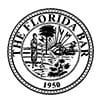In the interest of maintaining environmental quality, Collier County, Florida, makes retaining native vegetation a priority. Before you can develop a property, you must determine the percentage of the area that qualifies as native vegetation versus exotic vegetation.
A qualified Environmental Consultant uses the Florida Land Use Cover and Forms Classification System to make the determination by investigating all habitats on a site and creating a map of the acreage. If the determination is that the habitat is an area of native vegetation, it must go to the county staff for review before development can take place.
What is native vegetation?
A habitat qualifies as native vegetation if at least 25% of the highest vegetative stratum consists of native plant species. There are three levels of vegetative strata. The groundcover is the lowest stratum, while the canopy is the highest. In between the two is the mid-canopy. In non-wooded areas, either the mid-canopy or the groundcover may be the highest vegetative stratum.
If the canopy consists of at least 25% native plants, it is an area of native vegetation even if the lower strata feature exotic plants exclusively. This may occur if lawn or pasture has replaced native groundcover but native trees remain. You must preserve the percent of native trees on the property by either retaining them or replacing them elsewhere.
Exceptions to native vegetation calculations
If there are existing easements on the property for egress or ingress for neighboring properties, the plants contained within them do not count toward native vegetation preservation calculations. You also cannot count them toward requirements for native vegetation preservation. Existing utility easements are also exempt.






